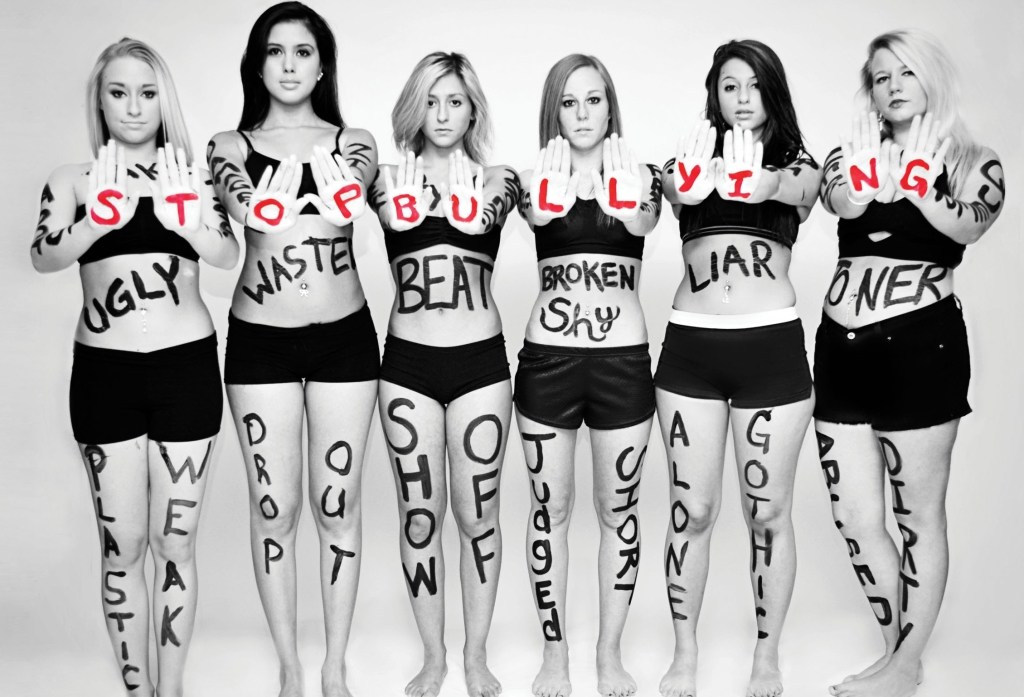
Promoting Awareness
How to Talk About Bullying
- Help Kids Understand Bullying understand bullying. Talk about what bullying is and how to stand up to it safely. Tell kids bullying is unacceptable. Make sure kids know how to get help.
- Keep the lines of communication open. Check in with kids often. Listen to them. Know their friends, ask about school, and understand their concerns.
- Encourage kids to do what they love. Special activities, interests, and hobbies can boost confidence, help kids make friends, and protect them from bullying behavior.

Prevention at School
Getting Started
Assess school prevention and intervention efforts around student behavior, including substance use and violence. You may be able to build upon them or integrate bullying prevention strategies. Many programs help address the same protective and risk factors that bullying programs do.
Assess Bullying in Your School
Conduct assessments in your school to determine how often bullying occurs, where it happens, how students and adults intervene, and whether your prevention efforts are working.
Engage Parents and Youth
It is important for everyone in the community to work together to send a unified message against bullying. Launch an awareness campaign to make the objectives known to the school, parents, and community members. Establish a school safety committee or task force to plan, implement, and evaluate your school’s bullying prevention program.
Create Policies and Rules
Create a mission statement, code of conduct, school-wide rules, and a bullying reporting system. These establish a climate in which bullying is not acceptable. Disseminate and communicate widely.
Build a Safe Environment
Establish a school culture of acceptance, tolerance and respect. Use staff meetings, assemblies, class and parent meetings, newsletters to families, the school website, and the student handbook to establish a positive climate at school. Reinforce positive social interactions and inclusiveness.
Educate Students and School Staff
Build bullying prevention material into the curriculum and school activities. Train teachers and staff on the school’s rules and policies. Give them the skills to intervene consistently and appropriately.
Working in the Community
- The Benefits of Working Together
- Potential Partners
- Community Strategies
- Additional Resources
The Benefits of Working Together
Bullying doesn’t happen only at school. Community members can use their unique strengths and skills to prevent bullying wherever it occurs. For example, youth sports groups may train coaches to prevent bullying. Local businesses may make t-shirts with bullying prevention slogans for an event. After-care staff may read books about bullying to kids and discuss them. Hearing anti-bullying messages from the different adults in their lives can reinforce the message for kids that bullying is unacceptable.
Potential Partners
Involve anyone who wants to learn about bullying and reduce its impact in the community. Consider involving businesses, local associations, adults who work directly with kids, parents, and youth.
- Identify partners such as mental health specialists, law enforcement officers, neighborhood associations, service groups, faith-based organizations, and businesses.
- Learn what types of bullying community members see and discuss developing targeted solutions.
- Involve youth. Teens can take leadership roles in bullying prevention among younger kids.
Community Strategies
Study community strengths and needs:
- Ask: Who is most affected? Where? What kinds of bullying happen most? How do kids and adults react? What is already being done in our local area to help?
- Think about using opinion surveys, interviews, and focus groups to answer these questions. Learn how schools assess bullying.
- Consider open forums like group discussions with community leaders, businesses, parent groups, and churches.
Develop a comprehensive community strategy:
- Review what you learned from your community study to develop a common understanding of the problem.
- Establish a shared vision about bullying in the community, its impact, and how to stop it.
- Identify audiences to target and tailor messages as appropriate.
- Describe what each partner will do to help prevent and respond to bullying.
- Advocate for bullying prevention policies in schools and throughout the community.
- Raise awareness about your message. Develop and distribute print materials. Encourage local radio, TV, newspapers, and websites to give public service announcements prime space. Introduce bullying prevention to groups that work with kids.
- Track your progress over time. Evaluate to ensure you are refining your approach based on solid data, not anecdotes.





